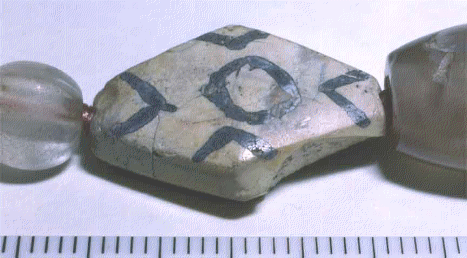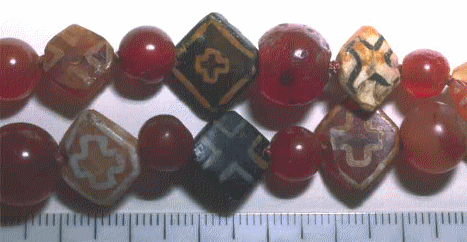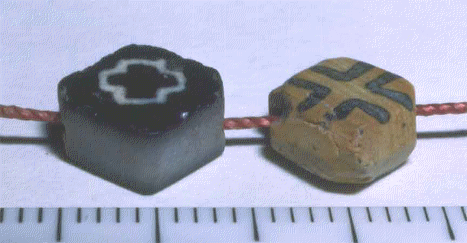|
Oddly, both of these beads appear to be much like the previous, but are clearly recut. One may speculate that a broken diamond tabular has been ground down to a smaller bead. In the left specimen, we can see that the actual interior color of the stone is white (though not as white as the artificial lines of the design). In the right specimen, we can see that this cutting was performed a very long time ago, as evidenced by the decay of the material on ALL sides. For many years, I have speculated that "Type II" beads are really just "Type I" beads, in which the process failed. Due to such problems as over-hating or prolonged heating, the white lines turn black (or gray), and the body of the stone turns white (or another non-red or non-black color). The right specimen here is a failed "Type I" bead that has become nearly a "Type II |
|






